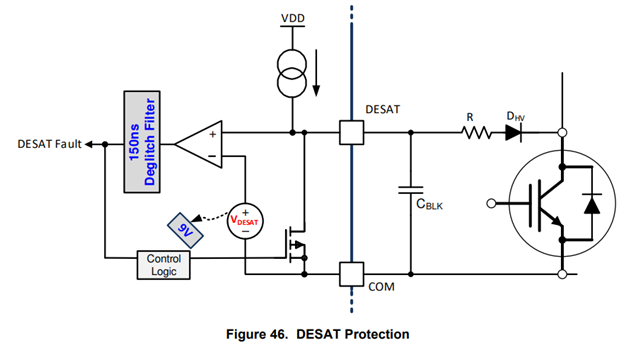Other Parts Discussed in Thread: UCC21750
Hi Apps team,
I was going through the datasheet of UCC21710/21750 and had some doubts:
1) On the first page of both data sheets a working voltage of 1500V is specified, but it also states that " it supports SiC MOSFETs and IGBTs upto 2121V DC operating voltage".
What is the difference between these two values. If I am having an application with a DC link voltage of 1500V, are these drivers suitable for it?
2) What is the difference between these two drivers - UCC21710 and UCC21750 - can they be used interchangeably?
3) Can I get a faster SC response by eliminating the Cdesat Cap?
Thank you,
Arun


